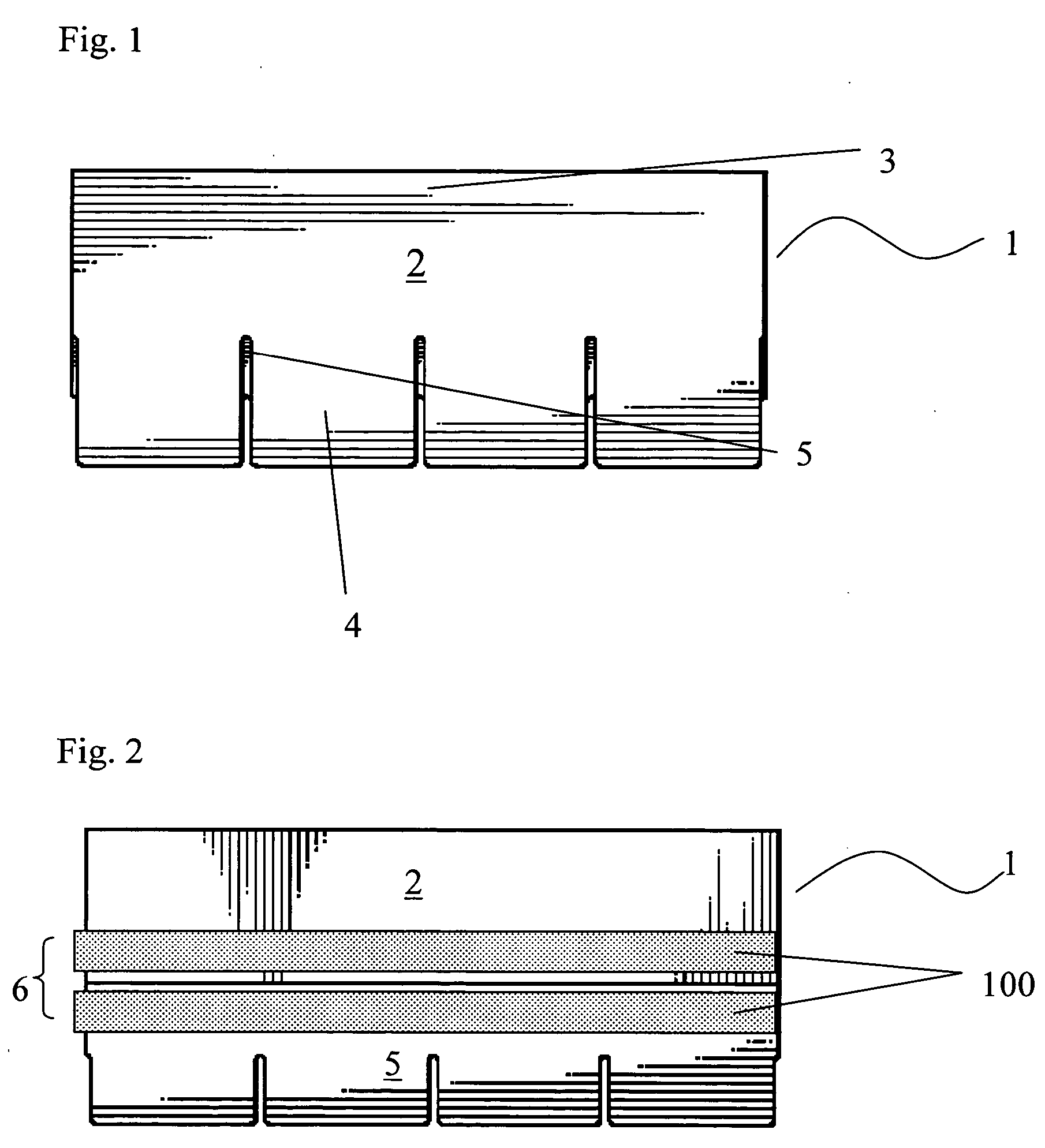Roofing shingles provided with release coating
a technology of release coating and roof shingles, which is applied in the direction of roof covering, roofing, construction, etc., can solve the problems of shingles at the bottom of a stack being more prone to sticking than those at the top, shingles to stick together, distortion and localized sticking of shingles, etc., to achieve the effect of reducing the cost of processing, reducing the cost of components, and reducing the cost of shingles to the bottom of a stack
- Summary
- Abstract
- Description
- Claims
- Application Information
AI Technical Summary
Benefits of technology
Problems solved by technology
Method used
Image
Examples
example 1
[0092] Comparative Example 1 was identically reproduced but for the application on the pressure point portion of the bottom side of the shingles of a coating of Nytal® 100 talc. The dilution ratio of the release coating was five parts water to one part Nytal.
[0093] The average force required to separate the 11 roofing shingles was 7.69 lbs. with a standard deviation of 3.74 lbs.
examples 2-6
[0094] Example 1 was reproduced except that the coating of that example was replaced with Graphite 100® synthetic graphite in Example 2; Microlite® vemiculite in Example 3; Desulco® graphite in Example 4; Vantal® 6H magnesium silicate in Example 5; and Nytal®400 talc in Example 6.
[0095] Each example involved 11 roofing shingle separations.
PUM
 Login to View More
Login to View More Abstract
Description
Claims
Application Information
 Login to View More
Login to View More - R&D
- Intellectual Property
- Life Sciences
- Materials
- Tech Scout
- Unparalleled Data Quality
- Higher Quality Content
- 60% Fewer Hallucinations
Browse by: Latest US Patents, China's latest patents, Technical Efficacy Thesaurus, Application Domain, Technology Topic, Popular Technical Reports.
© 2025 PatSnap. All rights reserved.Legal|Privacy policy|Modern Slavery Act Transparency Statement|Sitemap|About US| Contact US: help@patsnap.com


